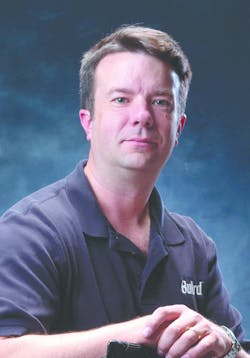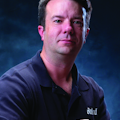As thermal imaging becomes more mainstream in the fire service, the potential uses of the technology expands on a daily basis. Many firefighters think of a thermal imager as a “firefighting tool,” and immediately relegate its use to those incidents that involve charged hoselines and burning structures. A thermal imager, however, is a versatile tool that has uses and potential applications at a number of emergency incidents.
Any time your eyes are not giving you all of the information you want, or giving the information as rapidly as needed, the thermal imager may assist to make your efforts more successful and less time consuming. There are also times when an imager can reveal information you never knew existed.
Let’s look at some “non-structural” applications as we explore outdoor uses for thermal imagers. I have traveled throughout the country and around the world, working with all sizes of fire departments, and have seen a broad range of levels of understanding about the limitations and applications for fire service thermal imagers. It’s always a good refresher to review some of the outdoor uses of thermal imagers that while obvious to some, may not be considered by others.
Non-structural uses for thermal imagers
There are dozens of non-fire applications for your thermal imager. One example is motor vehicle accidents. Determining how many occupants were in the vehicle immediately prior to the accident can help the incident commander determine potential patient count. When using a thermal imager to check for warm spots in vehicle seats, remember thermal imagers do not see through glass, so the window or door must be opened, or removed, before you make the scan. Also, scan multiple seats at the same time for comparative purposes. Looking only at one seat, however, doesn’t always tell you all the information. What you are looking for is contrasting heat signatures. This application is particularly useful when dealing with rollovers or overturned vehicles.
If you find a child seat installed or ejected, be sure to check for indications of a thermal contrast that may suggest it was occupied at the time. Many of us have had to deal with the stress of locating a child seat at the scene of an accident and trying to determine whether it was occupied. A scan with a thermal imager can quickly reduce your anxiety level.
A common question I get from firefighters during trainings is “How long will the thermal contrast remain after the person has left the seat?” The answer is simple – that depends. There are many conditions that play a role in the contrast reduction over time. These will include ambient temperature, humidity, the seat and clothing materials involved and the amount of time the person was in the seat. But, as a “rule of thumb” you can usually see some contrast for 20 to 30 minutes.
The same is true for motorcycle accidents. Due to the frequent high speeds of these accidents, victims can be thrown great distances or out of sight of first responders. The thermal contrast of the seat(s) should be able to tell you how many victims you may be dealing with. Get your crews comfortable with scanning seats to determine pre-crash occupancy levels. It could save you some time on the scene and maybe even someone’s life.
I was looking at an online picture of one of my former departments trying to tackle a trash-truck fire that had a fire develop seemingly deep inside the refuse load. With no trash truck driver initially on the scene, firefighters didn’t have the immediate option of dumping the load onto the highway to save the truck body and chassis.
As I reviewed the pictures, none of the crew deployed the camera that I know to be on the apparatus. My first thoughts were “what a perfect time to deploy the thermal imager.” Once the load was finally dumped on the street, the officer grabbed the thermal imager from the apparatus and used it to position the crew toward the hottest parts of the refuse pile, which they segregated from the rest of the trash, saving countless hours of overhaul work. This was all done while being directed by the officer using the imager.
Zero visibility on the interstate
A non-conventional use of a thermal imager occurred in Alachua County, FL, in January 2012. Due to a combination of early-morning darkness, heavy fog and residual smoke from a nearby brushfire, visibility for traffic driving on Interstate 75 was quickly reduced to zero. Twelve cars and seven tractor-trailers eventually were involved in a series of multi-fatality crashes that spanned more than a one-mile stretch of roadway that would ultimately claim 11 lives. One of the first-arriving apparatus from Alachua County was Quint 16. Upon arrival, the crew encountered zero visibility and was forced to stop short of the scene. The officer possessed the foresight to grab the thermal imager on the rig and exited the vehicle. He then used the imager to guide the apparatus farther into the scene as he walked alongside the vehicle, verbally instructing the driver as they slowly proceeded into the carnage.
Thermal imagers cannot see through water, and since fog is simply fine droplets of water, the ability for any imager to provide the user with a suitable image is very limited. However, the officer in the above incident relayed details of the image he obtained, under very difficult circumstances, which made the difference in being able to better position the apparatus to initiate size-up and then subsequently rescue and suppression operations.
Aiding in searches for victims
Thermal imagers can also be used to search around vehicles for ejected or walk-away victims. In a situation in Missouri, a fire department was called to a car-versus-tree accident. On arrival, responding crews located a severely damaged vehicle with airbag deployment and blood present on the airbag, yet no victim could be located. Firefighters used a thermal imager to look in the car and only the driver’s seat showed the imprint of an occupant. A search of the area was performed without locating any victims. Upon termination of the search effort, two firefighters were making their way back to the apparatus and using the thermal imager for night-vision purposes. As they approached the apparatus, they noticed an object in the branches of the tree immediately above the vehicle. This object turned out to be the driver, who was intoxicated and had warrants for his arrest and the only place he could find to hide was the tree he had hit!
I have heard more than one fire service leader say the thermal imaging is probably the best innovation for the fire service since the self-contained breathing apparatus (SCBA). By finding new uses for this technology, including the non-structural ones in this column, we can reduce losses to life, property and our fellow firefighters.
BRAD HARVEY is the Thermal Imaging Product Manager at Bullard. He is a veteran of public safety as a firefighter, police officer and paramedic and is certified through the Law Enforcement Thermographers’ Association (LETA) as a thermal imaging instructor. Harvey has worked as a high-angle rescue instructor and is a certified rescue technician and fire instructor. If you have questions about thermal imaging, you may email him at [email protected].
About the Author
Brad Harvey
BRAD HARVEY is the Thermal Imaging Product Manager at Bullard. He is a veteran of public safety as a firefighter, police officer and paramedic and is certified through the Law Enforcement Thermographers’ Association (LETA) as a thermal imaging instructor. Harvey has worked as a high-angle rescue instructor and is a certified rescue technician and fire instructor. If you have questions about thermal imaging, you may e-mail him at [email protected].

